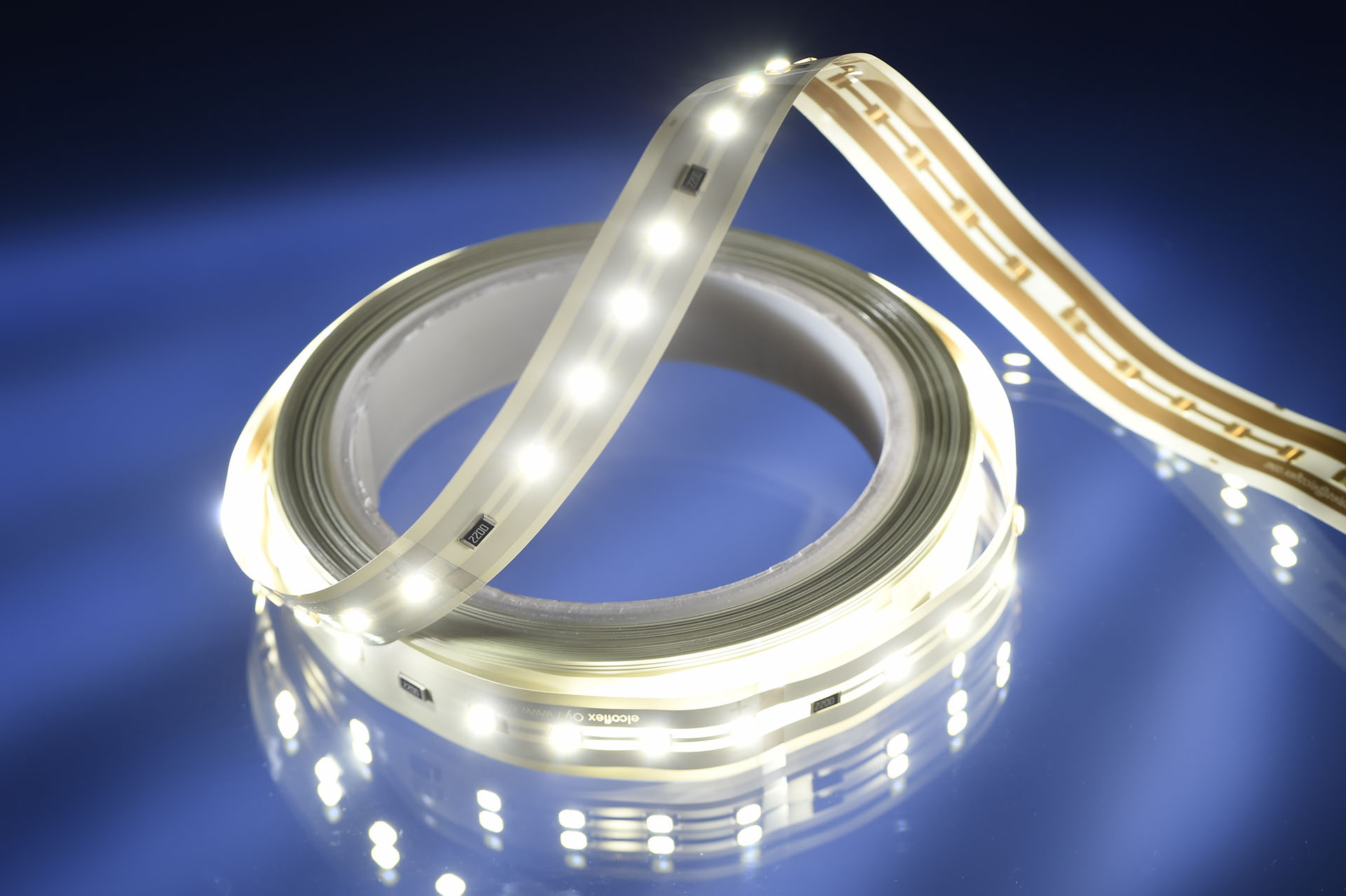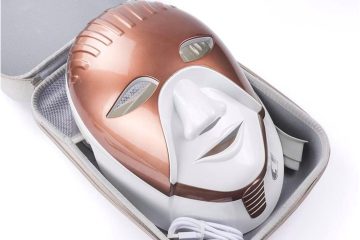Delving into the realm of LED lighting, flexible LED strip substrates emerge as a versatile and dynamic solution for a myriad of lighting applications. From their composition and materials to design considerations and applications, here’s everything you need to know about flexible LED strip substrates.
Understanding Flexible LED Strip Substrates
Flexible LED strip substrates, often referred to as LED PCB strips or LED tape, comprise a flexible printed circuit board adorned with light-emitting diodes (LEDs) arranged in a linear fashion. These strips offer adaptable and energy-efficient lighting solutions, catering to a diverse range of applications such as ambient lighting, decoration, signage, and everyday illumination. Renowned for their efficiency, durability, and ease of installation, flexible LED strips have gained widespread popularity across commercial and residential settings alike. Their inherent flexibility enables them to conform to various shapes and materials, providing unparalleled versatility in lighting design.
Materials Used in Flexible LED Strip Substrates
The construction of flexible LED strip substrates involves a multitude of components, each crafted from distinct materials tailored to their specific function. Let’s explore the materials utilized in each component:
- LEDs: The heart of the LED strip, light-emitting diodes (LEDs) serve as the primary source of illumination. Available in a spectrum of colors and brightness levels, LEDs generate light when electrical current passes through semiconductor materials.
- Printed Circuit Boards (PCBs): Functioning as the foundation for mounting the LEDs, printed circuit boards provide structural support and facilitate power connections. PCBs are fabricated from various materials, including FR-4, aluminum, and flexible substrates like polyester or polyimide, depending on the application’s requirements.
- Base Materials: The choice of base material significantly influences the performance and flexibility of the LED strip. Common base materials include:
- FR-4: Comprising an epoxy-based binder and woven fiberglass fabric, FR-4 offers excellent electrical insulation and mechanical strength, making it ideal for rigid LED strips.
- Aluminum: Aluminum-based PCBs feature a metallic core that aids in heat dissipation, making them suitable for high-power LEDs and applications requiring thermal management.
- Flexible Substrates: Flexible LED strips utilize bendable substrates composed of materials like polyester or polyimide, allowing them to conform to curved surfaces and tight spaces.
- Copper Trace Elements: Conductive copper traces establish electrical connections between components on the PCB, ensuring efficient current flow and performance.
- Solder Mask: Applied to the PCB surface, solder masks protect copper traces from environmental damage and electrical shorts, enhancing the longevity and reliability of the LED strip.
- Encapsulation: Some LED strips feature encapsulation or waterproof coatings to shield components from physical damage, moisture, and contaminants. Common encapsulation materials include silicone and epoxy.
- Connectors and Cables: Facilitating easy installation and connectivity, connectors and cables enable LED strips to be linked together or connected to power sources over extended distances. These components are typically crafted from conductive materials such as copper or alloys.
Flexible LED Strip Thickness Parameters
The thickness of flexible LED strips is influenced by the type of substrates used and the design layout. Here’s how these factors contribute to the overall thickness of LED strips:
- Flexible Substrates: LED strips manufactured on flexible substrates, such as polyester or polyimide, tend to be thinner due to their inherent flexibility. These substrates allow the LED panels to bend and conform to various shapes, making them ideal for installations in confined spaces or curved surfaces. Depending on the design and materials, flexible LED strips may have thicknesses ranging from 0.5mm to 2mm.
- LED Chip Packaging: The packaging of LED chips also impacts the thickness of LED strips. Advancements in chip-on-board (COB) technology and compact LED packaging contribute to smaller and more streamlined LED strip designs.
Designing Flexible LED Strip Substrates
Designing flexible LED strip substrates involves several key steps to ensure optimal performance and functionality. Here’s an overview of the design process:
- Define Requirements: Determine the dimensions, brightness, color, voltage requirements, and intended application of the LED strips to customize the design accordingly.
- Component Selection: Choose high-quality LED chips, appropriate resistors, and other electrical components based on the desired specifications and performance criteria.
- Substrate Selection: Select PCB substrate materials that align with the application’s requirements and environmental conditions. Consider factors such as rigidity, flexibility, and thermal management capabilities when choosing substrates.
- Trace Layout: Design copper traces with sufficient width and spacing to minimize resistance and heat buildup. Optimize the trace layout to ensure efficient current distribution across the LED strip.
- Circuit Design: Utilize LED strip design tools and software to create a circuit schematic, place LEDs, and establish electrical connections. Consider power source locations and voltage drop across the strip to maintain uniform illumination.
- Component Placement: Precisely position LEDs, resistors, and other components on the PCB layout to optimize performance and reliability. Ensure proper orientation and spacing to facilitate soldering and prevent electrical interference.
- Thermal Management: Incorporate heat dissipation features such as thermal pads or heat sinks to mitigate thermal issues and prolong LED lifespan. Proper thermal management prevents overheating and ensures consistent performance.
- Testing and Validation: Prototype LED strip designs and conduct thorough testing to evaluate electrical characteristics, luminosity, color accuracy, and overall functionality. Make any necessary modifications based on test results before proceeding to mass production.
Applications of Flexible LED Strip Substrates
Flexible LED strip substrates find myriad applications across various industries and settings, owing to their versatility and adaptability. Some common applications include:
- Decorative Lighting: Used in residential, commercial, and hospitality settings, flexible LED strips enhance ambiance and aesthetics by providing imaginative lighting solutions for spaces, furniture, and architectural features.
- Stage Lighting: Flexible LED strips are popular in theatrical productions, concerts, and events for creating dynamic stage lighting effects, backdrops, and accent illumination.
- Architectural Lighting: Employed in architectural lighting designs, LED strips accentuate building structures, highlight key features, and create visually striking effects for facades, interiors, and landscapes.
- Retail Displays and Signage: LED strips are utilized in retail environments for creating eye-catching displays, digital signage, and illuminated branding elements that captivate customers and enhance brand visibility.
Conclusion
Flexible LED strip substrates offer a versatile and efficient lighting solution for a wide range of applications, from decorative lighting to architectural illumination and beyond. By understanding the materials, design considerations, and applications of flexible LED strips, designers and engineers can harness their full potential to create innovative lighting designs that elevate spaces and captivate audiences. Whether used in residential, commercial, or entertainment settings, flexible LED strip substrates continue to illuminate the world with their brilliance and versatility.




